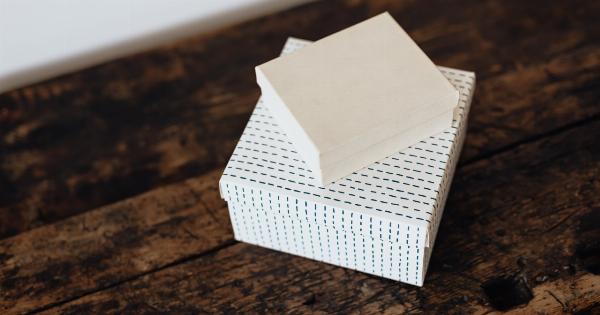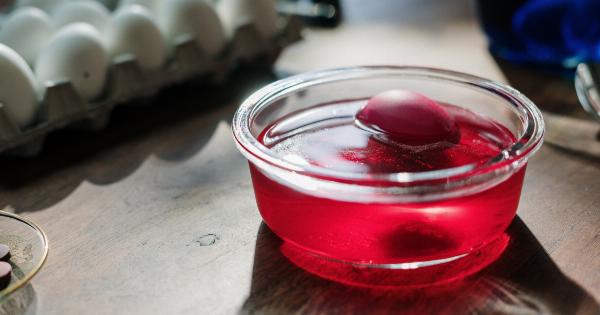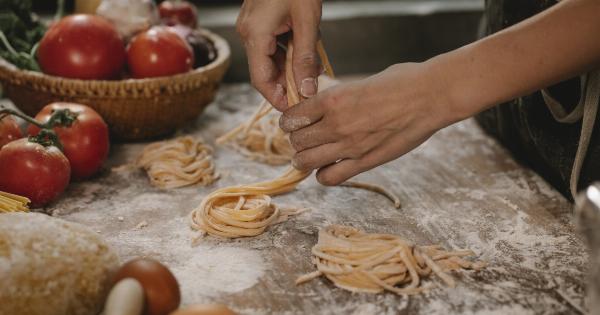Not only are herbs a staple ingredient in many meals, they also have numerous health benefits. However, herbs can spoil quickly if not stored properly. Maximizing the shelf life of your herbs is an effective way to reduce food waste and save money.
In this guide, we will provide step-by-step instructions on how to extend the shelf life of your herbs.
Step 1: Purchase Fresh Herbs
The first step to maximizing the shelf life of your herbs is to purchase fresh, high-quality herbs. When selecting herbs, make sure they are bright in color, free from wilted leaves, and have a strong aroma.
Avoid herbs that have brown or yellow leaves as this is a sign of wilting.
Step 2: Rinse Your Herbs
Before storing your herbs, it’s important to rinse them thoroughly to remove any dirt, debris, or pesticides. Start by filling a bowl with cold water and placing the herbs inside. Gently swish the herbs around in the water for a few seconds.
Remove the herbs and rinse under cold running water. Pat dry the herbs with a clean cloth or paper towel.
Step 3: Remove Excess Moisture
Moisture is the enemy when it comes to extending the shelf life of your herbs. Excess moisture can cause your herbs to wilt and spoil quickly. After rinsing your herbs, make sure to remove any excess moisture.
Use a salad spinner or a clean cloth to dry your herbs thoroughly.
Step 4: Choose Your Storing Method
There are several methods you can use to store your herbs. The method you choose will depend on the type of herb and how long you want to store it. Here are some storing methods:.
Method 1: Refrigerator Method
The refrigerator method is an ideal storing method for delicate herbs, such as cilantro, parsley, or basil. For this method, place a damp paper towel on the bottom of a container.
Place the herbs on top of the paper towel and cover with another damp paper towel. Seal the container with a lid or plastic wrap. Store the container in the refrigerator.
Method 2: Freezer Method
The freezer method is a great way to extend the shelf life of your herbs for several months. For this method, chop your herbs and place them into ice cube trays. Fill the tray with water, chicken broth, or olive oil.
Cover the tray with plastic wrap and freeze. Once frozen, remove the cubes and transfer them to a freezer bag.
Step 5: Label Your Herbs
Make sure to label your herbs with the name and date of storage. This will help you keep track of the herb’s shelf life and prevent any confusion when it comes time to use them.
Step 6: Properly Store Your Herbs
Proper storage is essential in maximizing the shelf life of your herbs. Here are some tips on how to store your herbs:.
Tip 1: Keep Herbs in a Cool, Dry Place
Keep your herbs away from direct sunlight and heat sources. Store your herbs in a cool, dry place, such as a pantry or cabinet.
Tip 2: Store Herbs in airtight containers
Keep your herbs in airtight containers to prevent moisture and air from getting in.
Tip 3: Store More Robust Herbs in Water
If you have more robust herbs, such as rosemary or thyme, store them in water. Place the herbs in a jar filled with water and cover with a plastic bag. Store the herbs in the refrigerator for up to two weeks.
Step 7: Use Your Herbs
Using your herbs in a timely manner is the key to ensuring their freshness and flavor. When using herbs, start with a small amount and add more as needed. Herbs can be added to salads, soups, and sauces, or used to garnish a dish.
Conclusion
Maximizing the shelf life of your herbs is a simple and effective way to reduce food waste and save money. By following these easy steps, you can enjoy the fresh flavor and aroma of your favorite herbs for weeks or even months.
Remember to purchase fresh herbs, rinse and dry them thoroughly, choose the right method for storing, properly label them, store them in a cool, dry place, use them in a timely manner, and enjoy!.





























